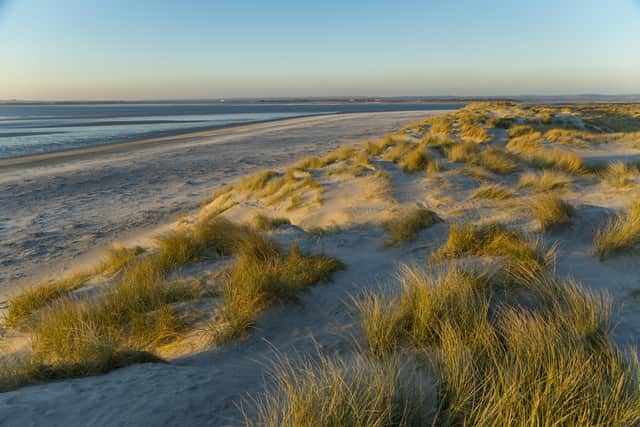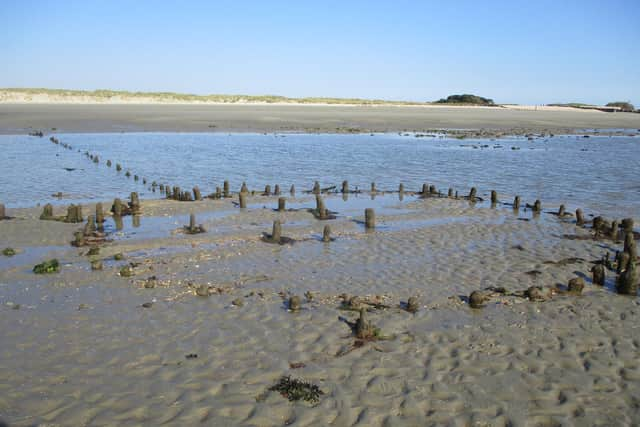500-year-old structure emerges from beneath sand at Chichester beach
and live on Freeview channel 276
Wooden fish traps, dating to Tudor times, known as ‘pound and leader traps’ were discovered under the waves at East Head.
The archaeology was briefly visible at low spring tides and is now covered again as the sands move again.
Advertisement
Hide AdAdvertisement
Hide AdThe mysterious structures were first reported by a member of the public in 2014 but follow up site visits found only sand and they remained hidden until 2020 when the public reported they had reappeared. A number of recording visits were then completed at low spring tides during 2021, before they disappeared again.


Archaeologists from Chichester and District Archaeology Society (CDAS) and CITiZAN, supported by the National Trust, have been recording structures in the tidal zone at this popular Sussex beach.
National Trust Archaeologist James Brown said: “In order to understand how these mysterious structures worked, you need to roll back the landscape and time around you. As you stand at East Head, strip away the cars, roads and recreational beach use, in your imagination. Earlier inhabitants would have collected fish from the pounds into baskets, transporting them to shore at low tide and then on to the community for selling and eating.
"As these successful and large fish traps were used regularly, they needed to be accessible all year round and within a predictable tidal range. So it follows that the landscape around the traps, when they were first constructed and used, was different what is found today. As the structures themselves won’t themselves have moved, the landscape around them must have changed.”
Advertisement
Hide AdAdvertisement
Hide AdThe offshore positioning of the fish traps today, shows how the sand spit at East Head has moved over hundreds of years.


Radiocarbon dating has given a date of 1561 for the East Head fish traps.
The discovery is a window into how people lived and survived on the Sussex coast.
Peter Murphy of CDAS said: "The geographical and age distribution of this type of trap is surprising. It shows that coastal communities, living similar lives, were closely connected, so ideas spread. But why do we not see traps of intermediate date between the Saxon period and the 16th century? Perhaps we have not yet found them, though Dr Cooper’s suggestion that there was ‘archaeological’ transmission of knowledge is worth bearing in mind.
Advertisement
Hide AdAdvertisement
Hide Ad“Could 16th century fishers have seen the remains of earlier fish traps and replicated them? As so often in archaeology new discoveries lead to new questions, leading to new research. We are extremely grateful to the Council for British Archaeology, South East (CBASE) for funding the radiocarbon dating at this site.”
James Brown said: “This moment is fleeting and the shoreline is highly mobile, so clues like this are being revealed daily before being hidden again or lost completely. Not just as the result of storms, but just from the daily lapping of waves along our shoreline. Volunteers and local residents regularly walking our coastline are hugely valuable to citizen science.
"We ask them to please keep sharing their knowledge and reporting what they find, to help us to continue to reveal the past and build our understanding of our rich and varied coastline.”